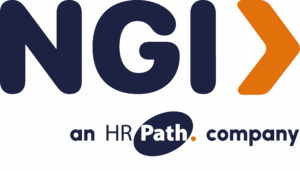
When businesses invest in new software, a significant amount of time and effort goes into selecting the right solution, configuring it to meet specific needs, and training employees to use it effectively. While this initial implementation phase is important, an often overlooked aspect of success is ongoing application support. Without a clear plan for maintenance, troubleshooting, and continuous improvement, even the most well-executed software deployment can fall short of expectations.
The Reality of Post-Implementation Challenges
No software implementation is ever truly “finished.” Once the system is live, businesses will inevitably face challenges such as performance issues, user adoption hurdles, security updates, and evolving business requirements. Without a structured support plan in place, these challenges can lead to productivity losses, increased operational costs, and even software abandonment.
For example, an organization may experience a sudden drop in system performance due to an unoptimized update, or employees may struggle to use new features effectively without additional training. Additionally, security vulnerabilities can emerge over time, requiring patches and updates to keep data safe. Companies that lack a proactive support strategy often find themselves scrambling to resolve these issues reactively, leading to costly downtime and inefficiencies.
Key Elements of an Effective Support Strategy
To maximize the value of new software, companies should plan for post-implementation support from the start. A well-rounded strategy should include:
- Dedicated Support Resources – Whether through an internal IT team or a trusted external provider, having a reliable support structure in place ensures quick resolution of technical issues. Without dedicated support, minor glitches can escalate into major operational problems.
- Proactive Monitoring & Maintenance – Regular system health checks, performance monitoring, and preventative maintenance help prevent small issues from becoming major disruptions. Organizations that rely on real-time monitoring can detect inefficiencies before they affect business operations.
- User Training & Adoption Support – Employees may need ongoing training as the software evolves. Providing resources such as refresher courses, knowledge bases, and on-demand support can improve long-term adoption and efficiency. The best software is only as effective as the people using it, so ensuring that users have access to continuous learning opportunities is essential.
- Change Management & Updates – Software updates and feature enhancements should be strategically implemented to minimize disruption and maximize productivity. Without a structured change management plan, businesses may struggle with resistance to new features or unexpected workflow disruptions.
- Disaster Recovery & Contingency Planning – A comprehensive backup and recovery plan ensures business continuity in the event of data loss or system failures. Organizations should regularly test their disaster recovery procedures to ensure they are prepared for any unexpected incidents.
- Vendor Support & Partnership – Working closely with software vendors can provide additional layers of support, including direct assistance for complex issues, insights into best practices, and early access to updates and new features. Establishing a strong relationship with the software provider can lead to better long-term outcomes.
The Long-Term Impact of Proper Support
Companies that invest in robust ongoing support strategies see better software ROI, higher user satisfaction, and improved operational efficiency. By treating support as a continuous process rather than an afterthought, businesses can avoid costly disruptions and ensure their technology investments continue to deliver value.
Additionally, organizations with a strong support framework can more easily scale their software solutions as their needs evolve. Whether expanding to new markets, integrating with additional systems, or onboarding new employees, a well-maintained software environment fosters agility and long-term growth.
Planning for Success Beyond Implementation
The key to sustained success with new software is to plan beyond the initial launch. Businesses that only focus on getting their software up and running risk long-term setbacks when issues inevitably arise. Instead, by incorporating ongoing support into their technology strategy, they can build a resilient system that adapts to new challenges and opportunities.
At Next Generation Inc. (NGI), we help organizations implement solutions with longevity in mind. From deployment to long-term optimization, our approach ensures that businesses stay ahead of challenges while maximizing the benefits of their software investments.
Are you ready to build a lasting support plan that keeps your applications running smoothly? Let’s talk.
